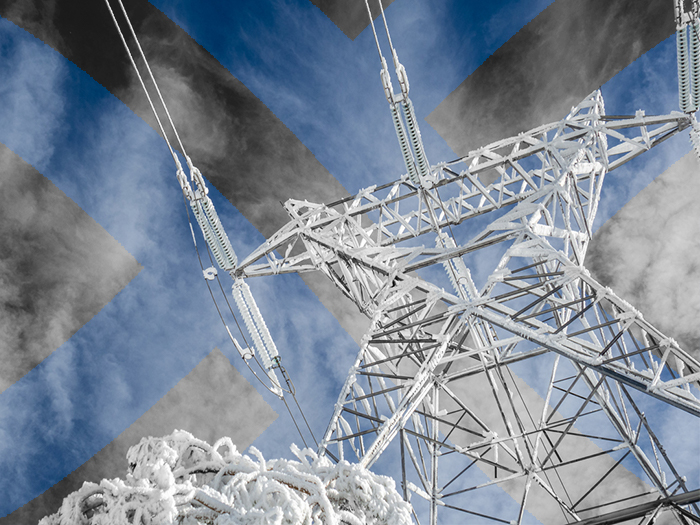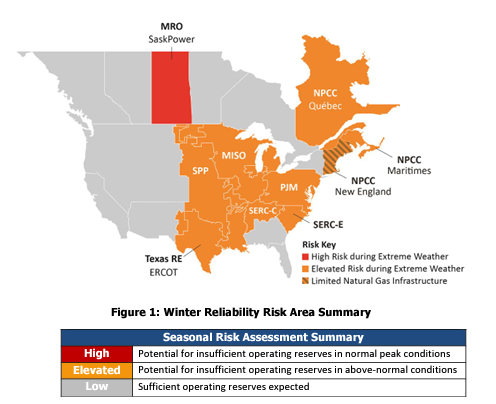News
better business decisions
Posted 2 years ago | 3 minute read

Two-thirds of the US at elevated risk this winter: NERC
Much of North America is again at an elevated risk of having insufficient energy supplies to meet demand in extreme operating conditions the North American Electric Reliability Corporation (NERC) has warned. The areas identified as being at elevated risk extend over much of the eastern two-thirds of the continent
In a report, published on November 8, NERC said, in the high risk areas identified, although resources are adequate for normal winter peak demand, any prolonged, wide-area cold snaps will be challenging due to generator outages and fuel vulnerability, extreme levels of electricity demand, difficulties in accurate forecasting and the risk of firm electricity transfer curtailments. NERC cited recent data showing that up to a fifth of generating capacity could be forced offline in case of a cold snap.

Source: NERC
For Midcontinent ISO (MISO) the report noted that new wind and natural-gas-fired generation and the extension of some older fossil-fired plants have increased available resources this winter by over 9GW from 2022, but the area remains at elevated risk. Like prior years, an extreme cold-weather event that extends into MISO’s southern areas can cause high generator outages from inadequate weatherization or insufficient natural gas fuel supplies.
This Winter MRO-SaskPower is at high risk as reserve margins have fallen by eight percentage points when compared to the previous winter due to increased peak demand projections, the retirement of a natural-gas-fired unit (95MW), and planned generator maintenance. High numbers of forced generator outages or wind turbine cold temperature cutouts can lead to operating reserves shortfalls at peak winter demand levels.
In PJM, SERC-East, and SERC-Central, NERC said a severe cold weather event that extends to the Southern United States could lead to energy emergencies as operators face sharp increases in generator forced outages and electricity demand. Forecasted peak demand has risen while resources have changed little in these areas since Winter Storm Elliot caused energy emergencies across the area in 2022. PJM and SERC have adequate resources for normal winter conditions; however, their generators are vulnerable to derates and outages in extreme conditions.
Southwest Power Pool (SPP) is estimated to have an Anticipated Reserve Margin (ARM) of 38.8% – over 30 percentage points lower than last winter; this is driven by higher forecasted peak demand and less resource capacity. While the reserve margin is adequate for normal forecasted peak demand and expected generator outages, higher demand levels and outages that have occurred during extreme cold weather result in shortfalls that can trigger energy emergencies.
Like other assessment areas in the Southern United States, in Texas RE-ERCOT the risk of a significant number of generator forced outages in extreme and prolonged cold temperatures continues to threaten reliability where generators and fuel supply infrastructure are not designed or retrofitted for such conditions. The risk of reserve shortage is greater than last winter due primarily to robust load growth that is not being met by corresponding growth in dispatchable resources.
The assessment reflects recommendations in the FERC, NERC and Regional Entity Staff Report, Inquiry into Bulk-Power System Operations During December 2022 Winter Storm Elliott which highlighted the need to take urgent action on the interdependence between the bulk power and natural gas systems, including the need for sufficient and reliable gas and electric infrastructure to sustain energy reliability.








